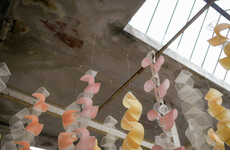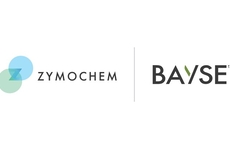
This Gelatinous Biomaterial Was Designed to Reduce Air Pollution
Alyson Wyers — January 4, 2018 — Eco
References: restologyproject & springwise
This gelatin-based bioplastic was created to reduce air pollution. Restology is a biomaterial that was developed with help from Textile Designer and Material Researcher Clara Davis. The recipe also includes activated charcoal, an ingredient that has been massively popular in the skincare industry recently.
The Restology Project aims to "reduce air pollution through design tools using composite materials." In addition to pigskin gelatin and the activated charcoal, the biomaterial is composed of glycerine and water too. Multiple bioplastic varieties are available, making it more beneficial compared to other bioplastics. It is porous, conductive, compostable and biodegradable as well. It also has adhesion force properties.
Restology is an example of how design can solve an environmental problem.
The Restology Project aims to "reduce air pollution through design tools using composite materials." In addition to pigskin gelatin and the activated charcoal, the biomaterial is composed of glycerine and water too. Multiple bioplastic varieties are available, making it more beneficial compared to other bioplastics. It is porous, conductive, compostable and biodegradable as well. It also has adhesion force properties.
Restology is an example of how design can solve an environmental problem.
Trend Themes
1. Biodegradable Biomaterials - The development of Restology shows the potential of biodegradable biomaterials in solving environmental problems.
2. Activated Charcoal in Manufacturing - The use of activated charcoal in Restology suggests its potential to be used in other manufacturing and industrial applications.
3. Composite Materials for Pollution Reduction - Restology demonstrates the potential of composite materials in reducing air pollution through design.
Industry Implications
1. Plastics Manufacturing - The development of Restology indicates the opportunity for plastics manufacturing companies to invest in biodegradable alternatives that are more beneficial than traditional plastics.
2. Fashion and Textile Industry - Restology's development shows potential for involvement in fashion and textile industry in finding alternatives to traditional materials.
3. Skincare and Beauty Industry - The use of activated charcoal in Restology reveals potential for skincare and beauty companies to incorporate the ingredient into their products for its pollution-reducing benefits.
5.4
Score
Popularity
Activity
Freshness























